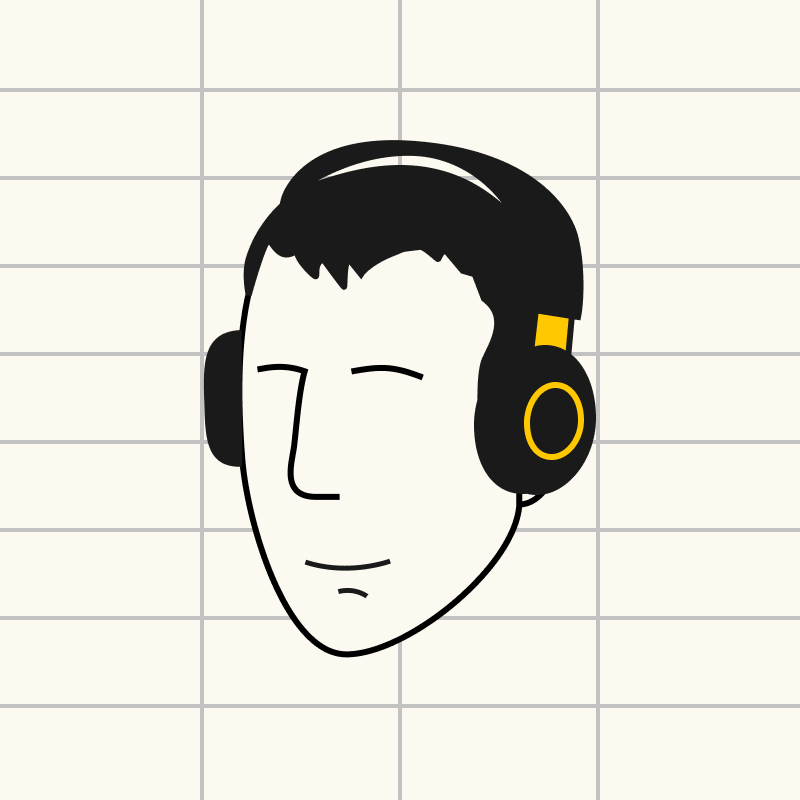Do's and don'ts of managing a product waitlist


Gmail, Spotify, Robinhood, Clubhouse, Superhuman. All of these products started with a waitlist of thousands (some millions) of people, vocal ambassadors for a product they hadn’t even used yet.
At Rows we also ran a product waitlist. It spanned from 2018 to 2021, gathered ~10k people, and converted many thousands to the product. In the process, we made our fair share of mistakes.
In this blogpost of our Product-Led Growth series we’ll share what we learned from the building and managing a 10k waitlist while answering some of the most important questions for those of you who have, or are thinking about having, a product waitlist.
 A summary of the key learnings of running the waitlist
A summary of the key learnings of running the waitlistWhy have a product waitlist
1. Validate initial product hypothesis
You have an initial version of the product ready but want to gather feedback from real users to validate early your market hypotheses. Better than conducting research interviews, putting a waitlist up will gauge interest in the product, and give you access to people willing to sit down with you for an onboarding call and give your exposure to people using your product.
2. People cannot successfully onboard themselves
At Rows, this was the main reason for adding the waitlist. A spreadsheet is a complex product and building all the necessary features to provide a compelling experience on a self-served model took time (~4 years).
But we knew that with the right hand-holding, and for the “right” type of user, there was a market for the beta product. So the solution was: set up a waitlist, gather interest, and select users to be onboarded to the product during a 1:1 coaching call.
3. Product is waiting legal approval
Some products are not authorised to operate in particular markets without legal approval. In these cases, a waitlist is a good way to gather momentum around the release and have an initial user base.
4. Long lead times to delivery
If you’re in DTC (direct-to-consumer) odds are that managing inventory and high lead times is of the utmost importance when launching the product. If that’s you, a waitlist can be a good way to manage expectations with your potential customers and only accept orders when you can ship fast, reliably, and with quality.
5. Create FOMO
This is typically a bad reason to add a waitlist to a product. The potential upside - the product goes viral and word of mouth drives the waitlist up like crazy - will most likely be outweighed by the downside - losing customers because they can’t access the product.
Unless you have a unique insight on how to make the product go viral, you can skip this marketing play and work on something else.
How to build up the waitlist
Here’s how we did it at Rows:
1. Friends and family
This sounds obvious (and it is) but friends and family were the first channel into building the waitlist and having the first users on the product. Go through your contact list, Twitter followers, and Linkedin contacts, find the ones who match your (idealised) user type and invite them to a demo.
2. Press attention during funding round announcements

The second channel we used was traditional PR. We worked with a PR firm during our A and B funding rounds to help get the story out to the right media outlets. The goal was to build an initial word of mouth around the product, and 10x the list to increase the number of onboarding sessions and users. The story ran on TechCrunch for both the series A (2018) and series B (2021).
There are other ways to get press attention outside a finance event. In fact, during this year we’ve gotten media attention with an irreverent billboard campaign, build-in-public tweets, and controversial company lists.
3. Product Hunt launches

Launch early, launch often. If there is one lesson we’ve embraced over the past 4 years is on the value of putting the product out as often and as early as possible.
And even though it may sound counterintuitive - why launch multiple times if you have a waitlist? - there are direct benefits to this: you’ll acquire new users to the waitlist, reactivate old users who will be curious about the new release, and establish a cadency of delivery within your team. There is no better forcing function to ship than a deadline.
At Rows, during the waitlist period we launched 3x on Product Hunt:
Announce the beta (Feb 2019)
Announcing the templates gallery (Oct 2019)
Accounting the rebrand from dashdash to Rows and launch of public beta (Feb 2021)
4. Notable mention
Finally, another tactic we used to increase the quality of the initial batches of sign-ups was to ask our existing users for an intro to someone they thought would benefit from using the product. Instead of adding these referrals to the waitlist, these people bypassed the process and we onboarded them directly.
How to run user onboarding calls
Once you get people on the waitlist, you’ll want to convert them to loyal users of your product. The most effective way we (like multiple others) found of doing this was via a 1:1 onboarding call. This is how we set up the call:
Duration: 30’
When: After we manually released the user from the waitlist, he got an email with an invite for the onboarding call. Later, the sign-up confirmation email contained a link to schedule an onboarding call.
Script: After multiple iterations, this was our script:
Pre-demo: 5’
Goal: Understand who the user was, their intent/use case, and the likelihood that the person would become a happy user. This phase was about understanding 4 things:
Who the person was, their role, team size, and company.
How they heard about us.
Their level of spreadsheet skills. This was essential to assess if the person could use the product post-call.
Why they signed up: what was the use case, and intent.
Product demo: 10’
Release account and build use case: 10’
Actually releasing the account to the user via our internal tool.
The most important moment came at this point, where we asked the user to share the screen and create their first spreadsheet in the product. Whenever possible, we ended the goal with a valuable spreadsheet in the user account, created by them. Fulfilling this step was highly correlated with user retention a week later.
Wrap up: 5’
The goal was to end the onboarding call with the follow-up call already scheduled. Granted, this was not always possible, but we found it to be a good practice.
Our conversion from sign-up to onboarding call was anywhere between 5-10%. Towards the end of the waitlist period, we started releasing accounts without an onboarding call. While this had a slight negative impact on retention, we had enough confidence in the product to let 20-40% of people onboard on their own.
When and how to release the accounts
Once you've built up enough demand for your product, you'll want to decide how you'll release it. Do you want everyone who signed up during this period? Or do you only want those who signed up recently?
At Rows we followed this 4 phase framework to release accounts from the list:
Phase 1: Start with the people in our network.
In the beginning, it was also about gathering relevant signal. We wanted to maximize feedback, work with people who would give a fair try to the product and give us their raw, unfiltered experience of using Rows. This meant that for the first few months we only onboarded people we knew. Everybody else could wait.
Phase 2: Onboard the waitlist gradually.
Then, we had enough confidence on our pitch to start onboarding anyone. Our rough prioritzation of who to release accounts was based on:
Team accounts: Release first accounts from email domains where we already had other users:
Email domain: Company domains were prioritized over personal email domains.
Use case fit: One of the questions of the sign-up form equated to “what do you want to use Rows for?”. The answer to this question determined how much fit there was with the current product offer, and how relevant it was to release the account.
As described above, we held an 1:1 onboarding session with most people before releasing their account.
Phase 3: Weekly releases of increasing larger batches of accounts.
4-6 weeks ahead of the open beta launch - the moment where people could self-onboard - we started releasing large batches of a few hundred accounts per week, mostly without an onboarding call.
We did it for two reasons:
Assess the product performance: At the time we were unsure the system could sustain hundreds of people performing calculations every day, and starting with smaller batches gave us a better understanding of how well the system scaled.
Gather testimonials and support ahead of launch day: Another reason to release accounts ahead of the launch was to increase the number of “Rows champions” - the number of people willing to share our future launch - and give us additional social proof on launch day. This was important because we were also revamping the website, and great logos and quotes give more credibility to the product.
Phase 4: Release all accounts
By the time launch day arrived, we had released >50% of the waiting list. A couple of days before the Product Hunt launch and the PR communication of the funding round we deployed the new version of the website with a sign-up form that led users to the product. We still had a waitlist with several thousand people, which we released in the following 1-2 days in batches of a few thousand at a time.
The real nirvana came when we saw an empty waitlist. It was liberating for the team to be released from the 3 year grind of worrying about, managing, and building a gated product. For as much as we learned during those years, the real test started once anyone could join, use, love, and (sometimes) hate on the product.
Final tips
Besides everything we’ve shared so far, these are three final tips that we wished we had known in 2018:
Enrich the waitlist with company firmographics

You’ll likely run your own algorithm to prioritise which accounts to release. And if you’re doing a 30min onboarding for each account you release, you want to be as certain as possible that your time is spent with the right ideal customer profile.
You’ll want to know if an email is company vs personal, and know more about the company: number of employees, industry, their linkedin url, etc. We did not have it at the time (I wish we did), but now we built this free email enricher template that takes an email, validates it, and enriches with all of this information.
Run your email list through an email validator
Emails on a waiting list, especially company ones, will become invalid quite fast. Assuming an average tenure at a job of 12-24 months, if you amassed a few thousand company emails on your list that are waiting to be released for a few months, hundreds of them will bounce.
That’s why it is helpful to periodically run your email list through a validator (like this) and clean it up.
We learned this the hard way at Rows. The day we released a good chunk of the list many emails bounced, leading to hundreds others to spam and preventing people from signing up. In the middle of the launch day we had to set up a parallel process of re-sending confirmation emails manually to avoid falling to spam. Not the stress you’ll want on the big day.
So tip #2, validate those emails.
Release accounts faster
Looking back, I would have released accounts faster.
As we saw above, emails have a short “expiration date” and delaying the release of the accounts means that people who would otherwise become engaged users will never get an account because they left the job. As an anecdote, our conversion to sign-up of accounts who were on the waitlist for >= 6 months was almost 0%.
Besides, the marginal value you get per additional onboarding call decreases fast. If you can afford it, it is very comfortable to hold on to the manual onboarding process. It self-selects people with higher intent, and leads to artificially high activation and retention rates.
3 years, hundreds of onboarding calls, 3 Product Hunt launches. Many wins, and a few fails. Running the product waitlist was one of the most impactful and fun projects we ran at Rows. I hope this helps other founders, product managers and marketers to have a smoother but (at least) equally successful experience.
If you have feedback, questions about the topic or want to continue the conversation, reach out.
Bonus: What is a good waitlist conversion? Lenny Rachitsky interviewed several founders and wrote this article with the results. It includes several benchmarks and helpful anecdotes.

